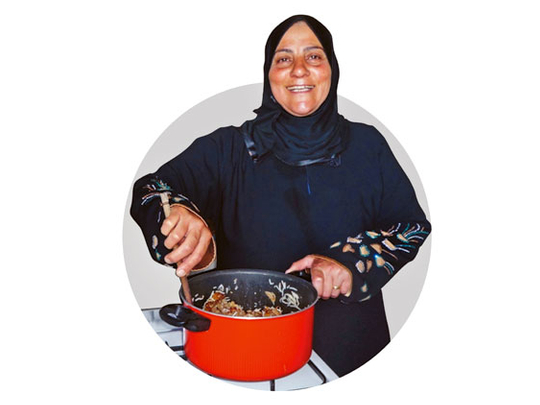
Like my family and friends, I eagerly await the arrival of Ramadan each year. It is not only a time of reflection, prayer and discipline, but also presents the chance to see friends whom for one reason or another I haven’t managed to catch up with during the year.
At Ramadan we reconnect with family (even those we may have had a falling out with) and celebrate the end of the fasting day. It also gives us the chance to experience hunger and have empathy for those less fortunate in the world.
Food has always been the cornerstone of my family. My husband has been a professional chef for many years now, working in our home country of Lebanon as well as Dubai. Time-honoured family traditions come to the surface at Ramadan, more so than during any other time of the year. I often reach out to my extended family at this special time, asking everyone to bring one dish for a communal iftar and/or suhoor meal. This takes the pressure off from one person slaving away over a hot stove after the afternoon prayers.
A family occasion
I’ve raised my four children to adulthood on homestyle dishes. I recall the early days of cooking with my daughter Heba, now almost 30 years old, and teaching her how to wash molokhia leaves in batches over the kitchen basin, freeing the leaves of grit and drying them. I also remember watching her, with amusement, mashing up grilled eggplant to a pulp, adding tahini, lemon juice and spices for the daily moutabel. Little did she know then about the nutritional value of many of the dishes she had a hand in helping me prepare. Many nutrients are found in molokhia leaves including calcium, potassium, Vitamin C and iron; besides, the main ingredient in moutabel is eggplant, which is rich in antioxidants.
I have tried to instill in my family, since my earliest days of fasting and learning from my own mother, the value of breaking the fast without overindulging. This holy time of the year is not about excess — far from it. We follow the Prophet’s golden rule of 1/3 food, 1/3 liquid and 1/3 air in our stomachs when breaking one’s fast, meaning eating easily digestible foods starting with dates and water, followed by fruits, and going for a walk after the iftar meal.
A traditional setting
One of my favourite things to do is to go to the river near my home in Srifa, South Lebanon, to meet with friends and family and enjoy tea, a few sweets and shisha before the start of suhoor. But iftar is also an occasion where I like to go all out, not only in terms of food preparation but also setting the ambience for the meal.
My daughter and I decorate the table with candles, and a Fanoos — a Ramadan lantern — is the centrepiece. This lamp is also a symbol for the end of a fast and women traditionally carry this to indicate that it is time to dine together.
Our best china and communal plates are laid out, and we also eat in the traditional way with our right hands as in the days of old. A variety of no less than 20 dishes adorn the table, ranging from healthy dishes such as fattoush, tabbouleh, hummus, moutabel, stuffed vine leaves and olives to the more hearty dishes such as grilled skewers, roasted veal with zaatar and vinegar and my family’s favourite — kebbeh in milk and molokhia.
When my children were much younger, I had the arduous task of waking them up before dawn for the suhoor meal. They didn’t seem to understand that they could take a catnap during the day but they wouldn’t be able to eat and drink.
The cyclical days during the holy month really brought us together in sharing our culture and culinary traditions as a people.












